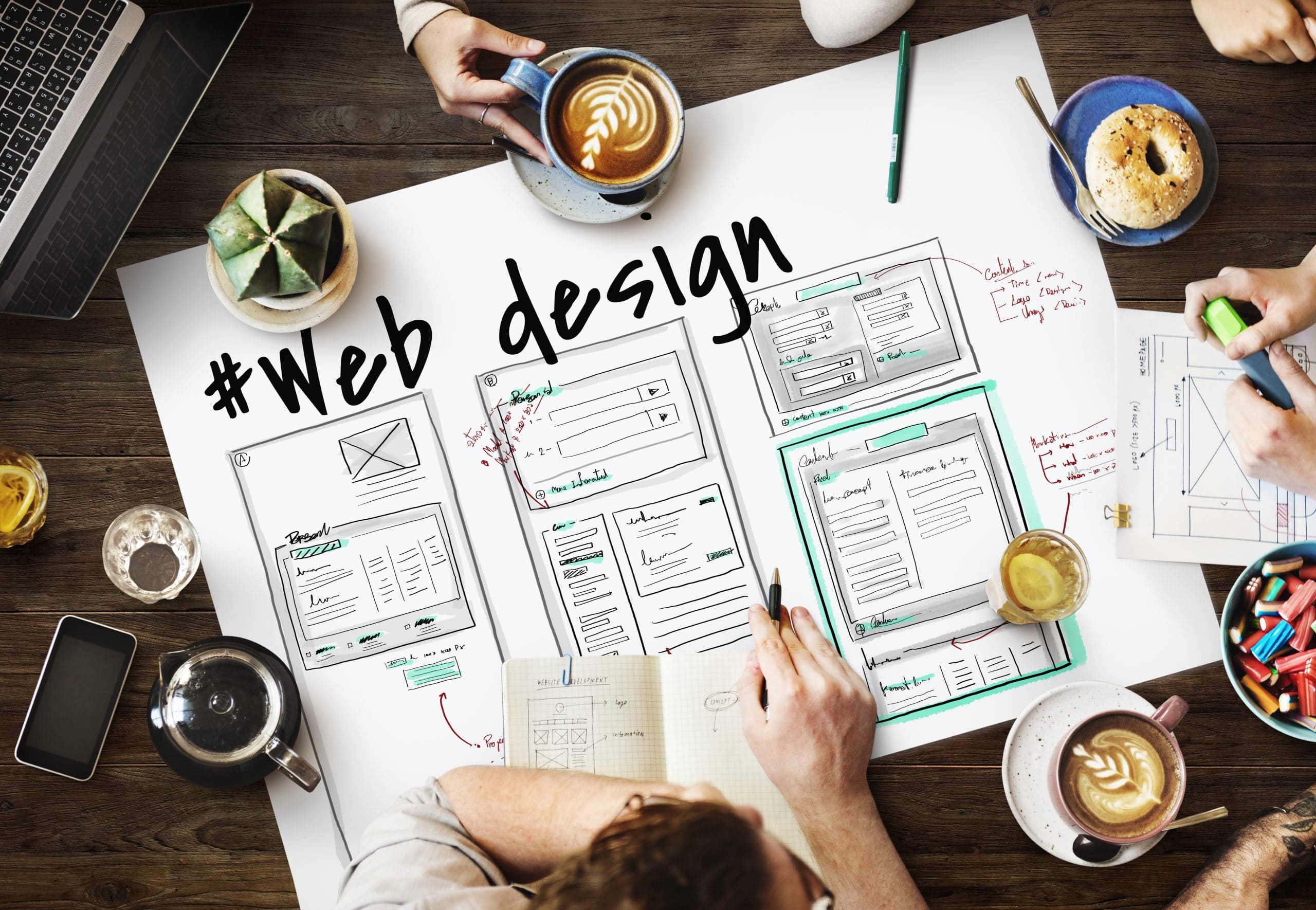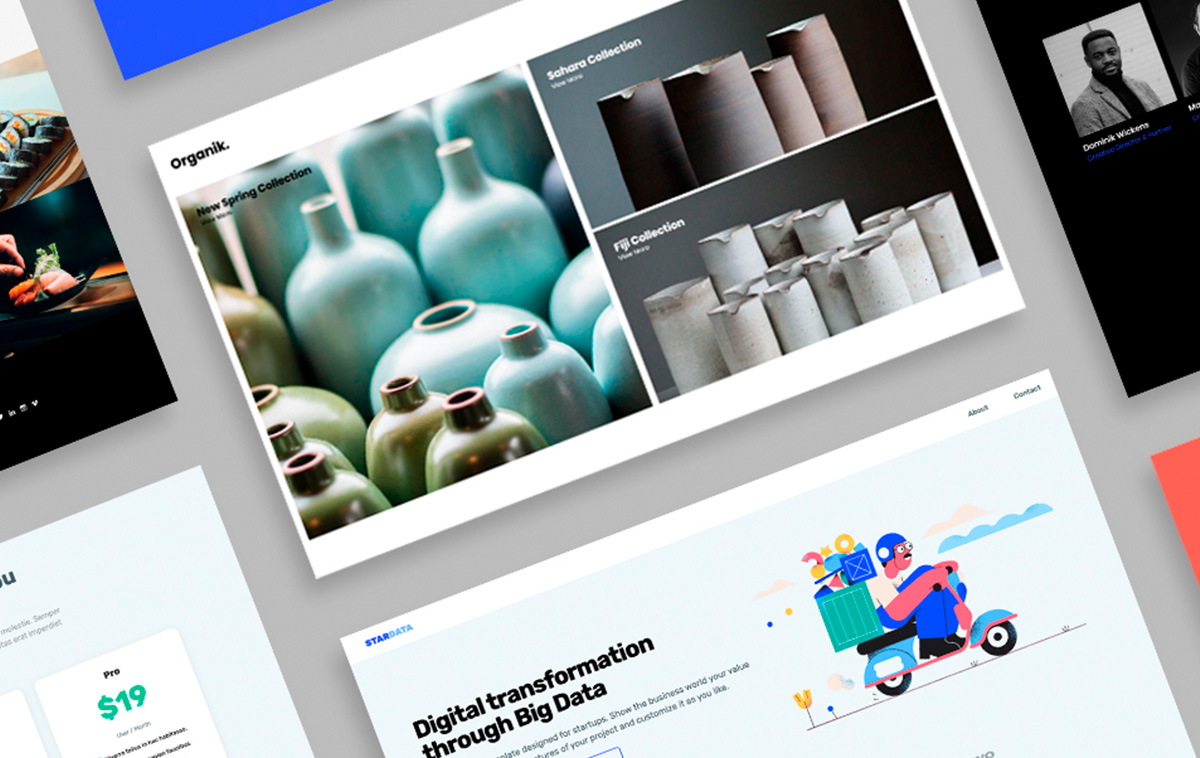Aligned Position Web Design: Boost Your Brand’s Visibility with a Stunning Website
Aligned Position Web Design: Boost Your Brand’s Visibility with a Stunning Website
Blog Article
The Most Effective Kinds Of Website Design to Enhance User Experience and Interaction
In the ever-evolving landscape of digital interaction, the performance of Web style dramatically influences individual experience and involvement. Various design strategies, such as minimal, responsive, and interactive layouts, each deal special advantages that can provide to diverse individual requirements.
Minimal Website Design
As digital landscapes come to be significantly chaotic, minimal website design has become an effective method to improving customer experience. This layout approach focuses on simplicity, concentrating on necessary components while removing unnecessary disturbances. By making use of sufficient white area, simple navigation, and a restricted color palette, minimalist layout promotes clearness and routes customer attention to vital material.
The core principle of minimalist website design is to develop a seamless communication for users. By lowering cognitive tons, customers can swiftly comprehend info without feeling overwhelmed. This direct strategy not only improves usability but additionally motivates engagement, as site visitors are more probable to check out a site that is aesthetically appealing and simple to navigate.
Additionally, minimalist style often highlights typography and imagery, making use of these elements purposefully to share messages efficiently. In essence, minimalist Web style is not just a trend; it is a thoughtful method that identifies the significance of user-centered design.
Responsive Web Design
In today's varied digital setting, receptive Web layout has ended up being vital for creating a seamless individual experience throughout a plethora of tools. As customers gain access to web sites on smartphones, tablets, desktops, and laptop computers, the capability of a website to adapt its format and content to different display dimensions and resolutions is important.
Responsive Web layout employs versatile grids, images, and CSS media queries to make certain that Web content is offered optimally, despite the gadget made use of. This strategy not only boosts the visual charm of a site yet likewise considerably improves use. Users are most likely to engage with a site that supplies a consistent experience, as it eliminates the irritation of needing to focus or scroll excessively.
By embracing receptive design, services can enhance their visibility and get to a more comprehensive audience. In recap, receptive Web design is an essential practice that boosts individual experience, engagement, and general satisfaction.
Interactive Website Design
Receptive Web design lays the foundation for improving individual experience, yet interactive Web design takes this an action additionally by engaging individuals in a much more dynamic way - Aligned Position Web Design. By incorporating aspects such as computer animations, clickable prototypes, and real-time comments, interactive Web style astounds individuals, attracting them right into a richer browsing experience
This method not only fosters interaction however also motivates individuals to explore content proactively instead of passively eating it. Methods such as gamification, where users make benefits for finishing tasks, can significantly boost the moment spent on a website and improve total complete satisfaction. Interactive functions can streamline complicated information, making it a lot more enjoyable and digestible.

Including interactive layout components can also lead to greater conversion he said rates, as individuals are most likely to engage with a site that actively involves them. Aligned Position Web Design. Inevitably, interactive Web layout transforms user experiences right into unforgettable trips, making certain that site visitors return time and once again
Apartment Design
Defined by its minimalistic strategy, flat style stresses simplicity and functionality, stripping away unnecessary components and concentrating on essential functions. This layout ideology focuses on usability, ensuring that customers can navigate user interfaces with ease and efficiency. By using a tidy aesthetic, level layout useful reference gets rid of the clutter often located in much more elaborate styles, thereby improving customer concentrate on web content and functionality.
The trademark of level layout depends on its use strong shades, simple typography, and geometric shapes. These elements add to a visually enticing interface that is both contemporary and approachable. Furthermore, flat layout fosters a feeling of clarity, permitting users to determine vital activities and info without distraction.
Additionally, level style is especially efficient in responsive Web layout, as its simpleness translates well across different gadgets and screen sizes. By focusing on essential features, level layout not only meets user demands however also encourages seamless interaction, making it a vital element of efficient Web style approaches.
Adaptive Web Layout
Flexible website design personalizes the individual experience by developing several repaired designs tailored to various display sizes and gadgets. Unlike receptive design, which fluidly readjusts a single format, adaptive style uses distinct layouts for certain breakpoints, ensuring optimum presentation on numerous systems. This approach enables designers to focus on the special features of each tool, boosting use by providing exactly what individuals require based upon their context.
Among the main benefits of flexible website design is its ability to maximize load times and efficiency. By offering tailored web content and pictures that fit the customer's device, websites can reduce data usage and enhance loading rates. This is especially valuable for individuals with slower links or restricted information strategies.

Furthermore, flexible layout assists blog here in a much more regulated and constant branding experience. Since developers produce several formats, they can make sure that the aesthetic components line up with the brand name's identity throughout various platforms - Aligned Position Web Design. This leads to a natural individual experience, enhancing engagement and advertising individual retention
Final Thought
Minimal design cultivates clearness and emphasis, while responsive style makes certain versatility across various tools, advertising availability. Jointly, these style approaches add to the creation of straightforward environments that not only boost contentment but additionally drive higher conversion prices, underscoring their vital relevance in modern Web style techniques.

Minimalist design promotes clarity and focus, while receptive layout guarantees adaptability throughout various gadgets, advertising ease of access. Collectively, these style comes close to contribute to the production of straightforward settings that not just improve complete satisfaction however likewise drive higher conversion prices, highlighting their important relevance in contemporary Web style approaches.
Report this page